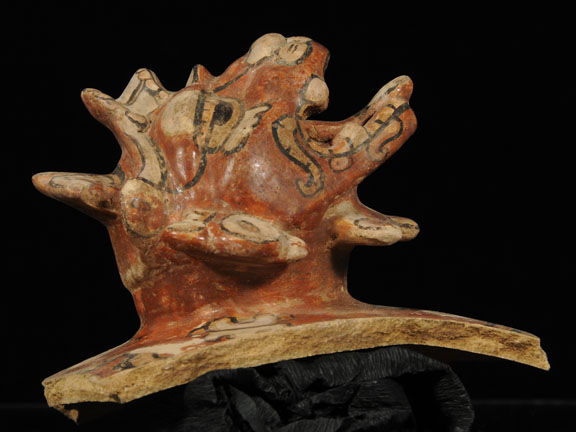In 1996, workmen widening the Jerusalem–Tel Aviv road in Lod (formerly Lydda), Israel, made a startling discovery: signs of a Roman mosaic pavement were found about three feet below the modern ground surface. A rescue excavation was conducted immediately by the Israel Antiquities Authority, revealing a mosaic floor that measures approximately 50 feet long by 27 feet wide. It is of exceptional quality and in an excellent state of preservation. The mosaic, comprising seven panels, is symmetrically divided into two large "carpets" by a long rectangular horizontal panel, and the entire work is surrounded by a ground of plain white. To preserve the mosaic, it was reburied until funding was secured for its full scientific excavation and conservation. Recently removed from the ground, the three most complete and impressive panels will be exhibited to the general public for the first time when they go on display at The Metropolitan Museum of Art on September 28. The pavement is believed to come from the home of a wealthy Roman living in the Eastern Roman Empire in around A.D. 300. Because the mosaic's imagery has no overt religious content, it cannot be determined whether the owner was a pagan, a Jew, or a Christian.

Exhibition Overview
The exhibition will highlight the three large panels found in what was probably a large audience room. Within the central panel—which measures 13 feet square—is a series of smaller squares and triangles depicting various birds, fish, and animals that surround a larger octagonal scene with ferocious wild animals—a lion and lioness, an elephant, a giraffe, a rhinoceros, a tiger, and a bull. Such animals were well known to the Romans since they appeared at gladiatorial games, where they were pitted either against each other or against human adversaries. The mosaic may therefore represent the largesse that the owner had conferred by staging games with wild animal hunts. Flanking the central panel to the north and south are two smaller, rectangular end panels. The north panel explores the same theme as the main panel with various creatures; the south panel is devoted to a single marine scene. A striking feature of all the mosaics is that none of them contains any human figures.
The exhibition will also relate the history of the discovery and the story of the mosaic's removal, conservation, and eventual journey to New York.
Historical Background
Lod is located near Tel Aviv, and the site was initially settled in the fifth millennium B.C. Its name appears in the written record as early as 1465 B.C.—in a list of towns in Canaan that was compiled during the reign of the pharaoh Thutmose III—and also in the Old and New Testaments. In the first century A.D., the inhabitants of Lod were sold into slavery and subsequently the town was razed. A Roman city was established there in A.D. 200, and at that time most of its inhabitants were Christian.
During the lifting of the mosaic in September 2009 preliminary sketches were found etched in the mortar setting bed. The footprints of several workers involved in laying the floor—some wearing sandals and others working barefoot—were also found.
Related Programs
A variety of education programs will complement the exhibition. These include gallery talks by exhibition curator Christopher Lightfoot, a hands-on workshop for teens, family programs, and a series of lectures. The Sunday at the Met program on October 3 will feature lectures about the discovery and conservation of the mosaic by conservator Jacques Neguer and archaeologist Miriam Avissar. This event will be co-organized by representatives of the Israel Antiquities Authority.
The exhibition will be featured on the website of the Metropolitan Museum (www.metmuseum.org).
Credits
At the Metropolitan, the exhibition is overseen by Christopher S. Lightfoot, Associate Curator, Department of Greek and Roman Art.
The Lod Mosaic is on loan from the Israel Antiquities Authority and the Shelby White and Leon Levy Lod Mosaic Center.









